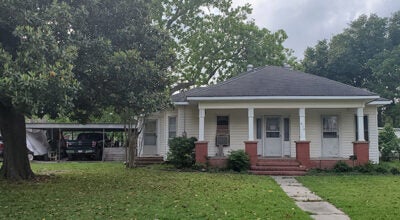In Port Arthur, drainage takes center stage
Published 10:25 am Monday, August 6, 2018
By Ken Stickney
Alberto Elefano, city of Port Arthur engineer, speaks softly but what he had to say last week seemed to snap some heads up around the City Council chamber.
There, in dual presentations on drainage in the Stonegate area and recent rains, he hinted that the routinely woeful flood conditions at nearby Jimmy Johnson Boulevard might be the result of a miscalculation that occurred more than 30 years ago when the roadway was first built. Was it an error in math?
He offered no math of his own or diagrams to prove the point; in fact, it seemed to be more water cooler talk among engineers than anything else. He conceded as much. He said his department is searching City Hall files to find the original plans for the street to rethink its construction.
But the engineer and his immediate supervisor, Public Works Director Armando Gutierrez, say they’ve heard such talk before. The suspicion is the road’s base was set 8-9 inches too low, that the benchmark was wrong from the start. That appears to be the prevailing supposition for the roadway from Highway 69 to Ninth Avenue.
“As you drive there, you notice a drop. When you come off the highway, there is a drop. Alberto (the engineer has been with the city only a few months) came across that just recently. He checked with other engineers. They suspect the same thing.”
In fact, Gutierrez said, in a heavy rain, you can see small cars struggle with rapidly rising water near the intersection, in front of the Waffle House. It’s not the only problem area: Jimmy Johnson near its intersection with Twin City Highway has a similar depression in the road.
“All that area is prone to flooding,” he said.
More than reviews
But the public works department is not satisfying itself by checking blueprints. They have done exhaustive work around Jimmy Johnson, an area that was overwhelmed by flooding last year, to check drain lines, ditches and pipes. Gutierrez said he was hoping that simple obstructions in the lines would be the cause of the flood problems in that area of the city. That would have been the cheap fix. But, overall, the lines were clear.
In some instances, the drainage ditches are too shallow, which he said doesn’t sit well with him. In other areas, ditches and pipes may need to be wider.
District 3 Councilman and Mayor Pro Tem Thomas Kinlaw, who represents a portion of the area, said drainage is his district’s top priority right now. Like others in that area, Kinlaw sustained flooding in his home; so did many neighbors.
Kinlaw said it’s important to check every possible source or cause of flooding. In some cases, he said, pipes had burst but they were addressed. That means developing a drainage policy for the city, which the city engineer is crafting now. It means enforcing drainage mandates for builders. It means moving water from one point of the city to the next point safely. It means working with Drainage District No. 7 and with neighboring cities, too, to see if there are other directions to send runoff.
“All of those things play a factor,” he said.
“We are taking on other people’s water,” Kinlaw said. Neighboring cities rest on higher ground. He said public works and the engineer are seeking ways to mitigate that.
“We know it is going to rain,” he said. “We have to address mitigation.”
Develop a plan
In addressing council members last week, Gutierrez said the longterm solution is to have a plan, to develop a policy. He said he worked on a drainage policy in McAllen, Texas years ago, and it was successful. He said it’s past time to have a policy now in this city.
“The city is growing. More development is occurring. All development is putting more water into the ditch,” he said. Solutions might rest in detention ponds, landscaping, in working with developers themselves to find creative solutions.
The city is pro-development, he said, and so is his department.
“We want a policy that says if you want to develop, when you develop you must put in facilities to control the discharge” or runoff water.
Some businesses, he said, build detention ponds and mask them though clever landscaping. Some new subdivisions can use detention ponds, as well. In some areas of the country, he said, people use tanks to hold water.
At Jimmy Johnson Boulevard he said, the city might take good advantage of the golf course and its ponds. That’s an expansive green space with sizable ponds that can hold water that runs over from the nearby streets.
“We could divert more water from the street into the golf course,” he said. In many areas of the state, he said, parks and golf courses serve as detention areas when it rains, and recreation areas when it is dry. That makes sense, he said.
Of note, he said, is that on the golf course, some pipes have collapsed, some from age, some from the weight of water following Tropical Storm Harvey, which dropped 5 feet of water on the county in August 2017.
What else?
Other things can be done, too.
“You start off by stopping increased flows,” he said. You widen ditches. Add green space in areas prone to flooding.
“It’s not going to happen overnight,” he said. “You set your priorities today, and assure ourselves we can secure our city for years to come.”
Then there’s the policy. Gutierrez’s department will develop one now, and send it to the City Council for its oversight. They will follow that up with public meetings. Later, there will likely be changes to the city codes.
“As long as we start working the right direction,” he said, “everything will come together.”





